Last month I talked a little bit about the Hollow Mask Illusion as a clue to the Bayesian operations going on “below the hood” in the brain. Today I want to go a little bit deeper into what the SSC survey results can tell us here. This is a list of a bunch of different variables I tested in the survey, and the percent of each group who saw the Mask Illusion and Dancer Illusion as ambiguous. “RR” is relative risk:
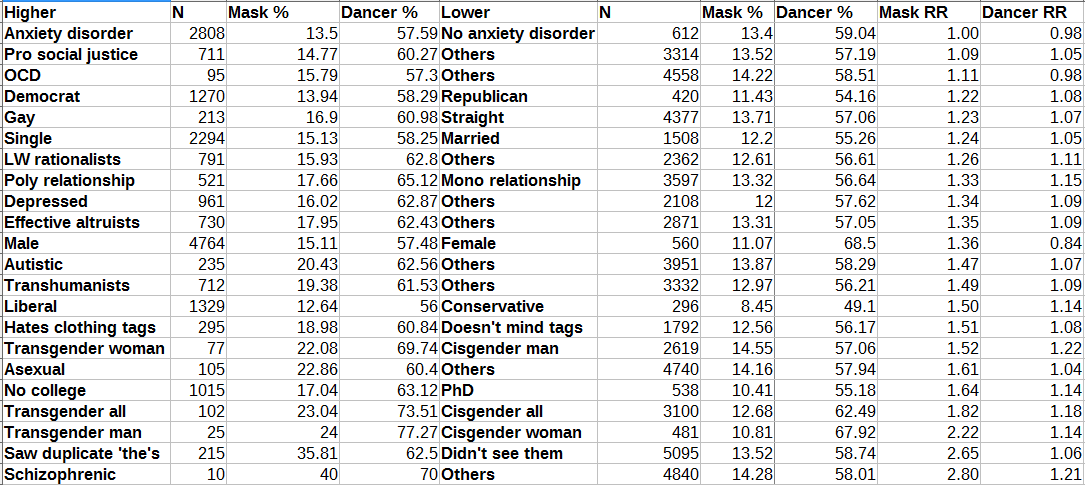
I don’t have p-values listed here, but almost all the Hollow Mask results, and a few of the Spinning Dancer results, were significant at p ≤ 0.01. And beyond the individual results, a few things jump out of the data in general. The Hollow Mask results and Spinning Dancer results are always in the same direction. And it always seems to be the weirder group who see more ambiguity in the illusion. Yes, schizophrenics see more ambiguity than non-schizophrenics. But transhumanists also see more ambiguity than non-transhumanists. Polyamorous people see more than monogamous people, gay people see more than straight people, EAs see more than non-EAs, et cetera. Where there’s no clear weirder/less-weird dichotomy, it seems like it’s the lower-functioning group that has more ambiguity. High school dropouts rather than PhDs. Single people rather than married people.
So there seems to be a picture where high rates of perceptual ambiguity are linked to being weirder and (sometimes, in a very weak statistical way) lower-functioning.
But why stop there? The dream is to connect this to some sort of intuitively-meaningful cognitive variable.
For a sense of “intuitively meaningful cognitive variable”, consider something like those four-letter things you get on the Myers-Briggs test. Go ahead and interject that Myers-Briggs is unscientific, and no better than astrology, and inferior to the Five Factor Model in every way. But everyone who says that always ends up being INTJ/INTP. And a survey found that SSC readers are about ten times more likely to be INTJ/INTP than the general population, p ≤ 0.001. Without necessarily claiming that the underlying classification cleaves reality at the joints, or even that it gives you more information than you put into the personality test that generates it, differences in cognitive styles seems real. I don’t know how fundamental they are – it could just be something as silly as a freshman philosophy professor who encouraged you to think logically or something – but they seem real.
And they seems different than the variables on the Big Five. The Big Five measures personality. Myers-Briggs claims – maybe wrongly, but at least it claims – to measure how you reason about things. Maybe everyone’s had the experience of meeting someone who seems very smart, but who just reasons in a very different way than they do.
And if the Bayesian brain hypothesis is right, and perception and reason really do draw on the same fundamental processes, then I wonder if we could isolate some differences in reasoning by measuring differences in perception. Could perception of certain optical illusions predict responses to certain cognitive biases? Could that go on to predict things like whether people like analytic or continental philosophy, whether they’re early-adopters or traditionalists, whether they think people are basically good or basically evil?
I know this is an overly ambitious research program. But remember: the studies looking for the genetic underpinning of political opinions usually implicate NMDA receptors, the same receptors most likely involved in the Hollow Mask. And there was a small but highly significant correlation between Mask perception and political opinion on the survey. I agree this is crazy, but I don’t want to say it’s impossible just yet.
On the the next survey, I want to include a whole battery of illusions, including multiple examples of the same illusion asked in different ways, and different illusions that seem to be measuring the same thing. For an example of the latter, take the “saw duplicate thes” item on the table above. This was a question asking if people had noticed various duplications of the word “the” I had put in the survey (like the one in the second and third words of this paragraph). People who noticed the duplicates were more than twice as likely to see ambiguity in the Hollow Mask as others, the highest result other than schizophrenia itself. This confirms my hypothesis that there’s some underlying similarity between these two illusions. If I can get enough of these, then I can eliminate noise and get a better idea of the underlying mental process that might be generating all of these.
With luck, I might end up with a couple of different factors that predict illusion perception. Then I would want to see if those factors also predict performance on reasoning problems (like cognitive biases) and on high-level beliefs (like liberal versus conservative).
The big question is whether some non-neurological factor influences perception of illusions – like maybe just trying really hard to see them. I’m not sure how to adjust for that, except to say that the pattern here doesn’t really look like that. The Dancer illusion was the one most susceptible to increased effort, and it got the weakest results. On a quick check, it doesn’t look like this is all due to something obvious like gender or age. But maybe there’s still some confounding factor that I’ve missed.


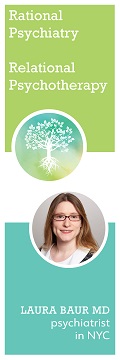

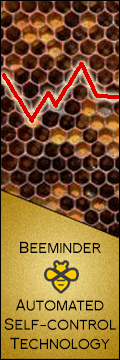
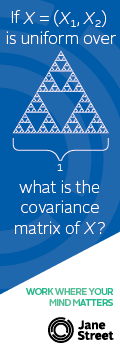


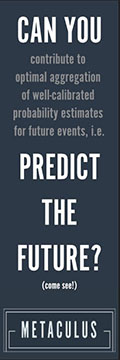
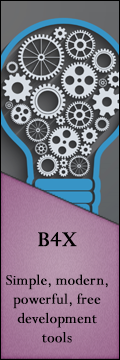


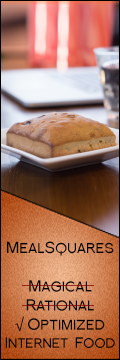




This is all super interesting, am curious where this will go!
Potential confound: the survey did not just test the susceptibility to the illusion, but also the willingness to (1) believe that something unexpected and interesting could happen, and (2) to try a bit harder and a bit longer to perceive it. It took me a good 20 seconds to reverse the dancer rotation the first time, but I persevered because I though the effect would be worth the effort. Maybe someone else would have shrugged and moved on after ten seconds. So maybe recording or limiting viewing time would be a good thing.
Yes. This and also prior exposure.
I would also like to see more investigation around this point.
In my case, I spent roughly a minute seeing only the hollow mask version.
Only once I gave up and started reading the article did I spy in my peripheral vision the mask pop-out and reverse direction.
Following this, and for quite some time afterwards this was the only version I could see, even when looking at the image directly.
Have you considered that telling your surveyed group exactly how you’re trying to trick their brain might affect the results?
Also, consider just asking “how much time did you spend trying to see the dancer illusion?”
If you’re redoing the survey, would you consider adding a response somewhere between “I can’t change the direction of the dancer” and “I can change the direction of the dancer easily”? I could change it but it took closing my eyes and focusing for several seconds, so none of the answers actually applied. (This might speak to stochasticlight’s concern above, too).
I’ll second this. For me, the dancer didn’t change direction willy-nilly: I had to focus and force it to change direction with a non-trivial amount of mental effort.
I would consider including a control: some sort of a perfectly ordinary image that is not an illusion; and another that is an illusion, but one that cannot be flipped like the dancer or the mask. This might help you determine whether you are measuring cognitive differences in general, or suggestibility specifically.
Very much agreed. This could just turn out to have been a test for people’s tendency to check the “I saw through the illusion” box, which might indicate certain tendencies of self-perception. For instance, people who conceive of themselves as being non-standard in some significant regard may answer that they saw the illusion at a much higher rate. This would quite easily explain why the “weirder” groups so consistently report seeing through the illusions. This could be tested by including “fake” illusions, which will help to weed out people who have simply convinced themselves that they’re seeing through the illusions but don’t actually manage it. These results are just a little extraordinary, and as such deserve extraordinary skepticism in order to produce something valuable.
Of course, it’s possible that conceiving of oneself as non-standard is indicative of some deep cognitive-perceptive quality of brain and mind, but there’s other work to be done on that.
An probably unintentional side effect of this ongoing study is that every time I see a ‘the’ written on this site I become instantly suspicious. I just know it will have an evil twin, even if my Bayesian brain doesn’t perceive it.
I’m sure that it is hard to read the the articles on this site when you are paranoid like that.
Not paranoid enough (which technically means not paranoid at all?), if you didn’t notice the the one he put in this post.
I wonder if there’s a correlation between not being a native English speaker and not noticing double thes. There are no articles in my mother tongue, so my brain automatically filters them out as noise. Not sure I would have noticed triple thes either.
Native speaker, don’t notice doubled articles unless I’m really concentrating.
So, Democrats, Liberals, males and social-justice-types are all on the lower functioning, weird side. That’s my takeaway. 😉
Also, why are we all so anxiously disordered?
ಠ_ಠ
This. It would be nice to get more than a few comments into a relatively apolitical topic without being reminded of the hate parade.
You’re correct, of course. As a member of the feminist alt-right I totally wanted to spew hatred at men, liberals etc. It certainly had nothing to do with poking fun at what I regard (with some caveats) as my in-groups.
Well, at least you gave a decent answer to my question.
If we weren’t, we’d be too busy hanging out with all our friends (who we love and feel loved by) to read a Psychiatrist’s blog, hahaha.
Left liberals, libertarians and non-religious people are lower in Orderliness (a subfactor of Big 5 Conscientiousness). Which means they tend to live messier lives (in every sense) than other people, all else being equal.
Left liberals are also non-trivially higher in Neuroticism, but the correlations are pretty low.
Scott, have you tried to construct a non-Bayesian explanation for this?
—
Slightly unrelated, but was amused to see p-values in this post. Evil, evil p-values.
Do you mean “search for obvious simple confounders” or “come up with a theory of the brain that doesn’t involve Bayes”?
The latter. Confounders will be there either way, but I am sort of worried whether many “just so”ish Bayesian explanations for stuff in the brain may be explain in a non-Bayesian “just so”ish way.
I guess what work is Bayes doing here?
I don’t know much about NMDA, but one obvious confounder is that liberals and conservatives have usually spent decades thinking like liberals and conservatives. So maybe belonging to a group for that long wires your brain in certain ways. Similarly, schizophrenics have spent a long time being schizophrenic. So just because a condition shares some quirk in their brain architecture doesn’t mean that quirk causes that condition.
Is there any correlation with reading speed?
Why would you expect this?
I suspect the “the the” thing is largely correlated with reading speed. Someone who reads quickly probably is paying attention to phrases and sentences, whereas someone reading slowly is more likely to be paying attention to the individual words.
(Not sure about the the other illusions or conditions being correlated with reading speed, to be fair.)
I would also expect a difference between people who read with a voice in their head and people who don’t.
I think you are at the point where you might want to do a proper scientific experiment rather than more online surveys on your blog.
I’m not sure I can – this requires more infrastructure than I’m able or willing to collect. My hope is that if I do enough informal experimentation, I’ll catch the attention and interest of someone who can do it formally.
If there are any readers who have any connections to such a person, this is your call!
Don’t psychologists just put the survey through mechanical Turk these days?
This question is (probably) better addressed through an experimental methodology rather than a self-reported survey or other qualitative method. So someone with access to ~60 undergraduate students who could be randomly assigned to a condition etc. etc.
Also… someone with an interest and background in perception and skilled in the psychometric evaluation of the “intuitively meaningful cognitive variable” of interest…as hinted, MBTI it not a favorite of many psychologists mostly for validity and reliability reasons.
In other words, diving into something like this isn’t a weekend project. I have a very strong research interest in perception and cognition. Even if I linked this to working memory capacity (a construct I measure often in my work), it is still far enough away from the work I do that it would take me months to get up to speed just to write a decent IRB.
Not to mention…there may already be someone working on something along these lines. Again, I’d have to familiarize myself with the literature to even know that much.
I feel like we need a special text editor for people who’s brains never see the multiple thes
I have a lot of trouble self editing my own writing because my brain conflates phonetically similar words
ie, I logically know the difference between ‘there’, ‘their’, ‘they’re’, but it doesn’t always ping my brain that every type of example like that is something that might be a problem
Personally I never see the multiple words but my brain seems to be very good at finding errors otherwise.
I think the “the the” thing is a unique class of error.
Potentially interesting note. I notice the duplicates but it in my case it seems to be tied to special reasoning. In essence I’m not reading the repeated “the” so much as noticing that the string is 4 characters longer than it should be.
Same here.
Same here, I’m good enough at finding spelling errors that I used to have a job as a proofreader for a local paper when I was a student, yet somehow I never see those “the the”. I guess it might be because I read Scott’s posts relatively fast and I’m not actually searching for spelling errors, but despite this something like “there” vs. “their” will stand out in my mind. But not “the the”.
Same here.
Me too. I get paid for proofreading. Most typos and spelling mistakes leap out at me. But I never notice the duplicate thes.
@ phil
I routinely make the same sort of error. In fact actually I have trouble spotting such errors because my brain seems to automatically insert the correct form. Interestingly I also seem to do this for incorrect declensions when reading Ukrainian/Russian.
Spinning Dancer reminds me off that illusion when at some medium speed [of the car], we see the wheels rotating in the opposite direction, which disappears when it slows down.
Doesn’t that only happen on film, and have something to do with frame rate?
Yes, the spinning wheel effect is not technically an illusion. It has nothing to do with your brain, but is strictly a side-effect of a low sampling rate. It is called “aliasing“.
The wagon-wheel effect has been observed under continuous illumination (e.g. in real life with natural lighting, not strobe lights). In literature, I think they call the real-life version “illusory motion reversal,” if anyone is interested in further reading. The linked paper claims it is a result of perceptual rivalry.
Some have linked the continuous illumination case to low-freq sampling *in the brain*: https://hal.archives-ouvertes.fr/hal-00111091/document
Indeed, that’s the other major theory (that I’ve heard of). It’s a matter somewhat in dispute, but in either case, there is clearly something about your brain causing the illusion.
What are illusions but side-effects?
Or, more to the point, do people differ in how they see such effects, too? The kind where 1) you know which way it should go, thinking otherwise doesn’t make any sense, but we still do it, 2) it’s a “real image”, unaffected bythe artist’s choice? Or do all brains get tricked the same?
Jordan Peterson talks about some similar things here:
https://www.youtube.com/watch?v=sWbj-2DRLps
I was looking at the mask illusion again and I noticed something. It has shading but not shadows. The light source seems to be on the right and maybe a bit behind the viewer, so it should cast shadows of the edge of the mask onto the inside surface during part of the rotation, but it doesn’t.
While the data obviously still count, this could be a big part of how the illusion works and why it feels like something is terribly wrong when looking at it.
Many people accuse the rendered mask of fraud. But here is a video of a real mask. It does have a small shadow, but I find it almost as convincing as the rendered mask.
(Other people say that the illusion rests upon unrealistic placement of lighting.)
Yeah, that’s still pretty convincing. The rendered one does the illusion a tiny bit better but the obvious lack of shadows seems kind of cheap when it’s unnecessary anyways…
I find the real mask to be much less convincing. For me, the illusion only works during a small segment of the rotation, just before the mask is completely backwards.
I found the illusion almost equally strong with the real mask. However, if we saw it in the real world, we would have the advantage of depth perception due to stereoscopic vision. I wonder how much of this illusion comes from the fact that there is no data from a channel that normally provides some.
I don’t want to sound petty, but it might be that people who are part of unique groups come to identify with that feeling of uniqueness, and are more likely to convince themselves that they are part of the special group that can see through the illusion.
I’d normally have more faith in humans, but I remember this section of the survey and had to exert a significant effort not to pick the “cool” option and settle for being part of the masses. That was despite pretty clearly not being affected by any of them, I just wanted to feel special I guess.
(Obligatory “longtime reader, first time commenting”)
That doesn’t predict the behavior of the two illusions compared to each other at all. The Dancer looks like it’s easier to see through, but we get smaller and often nonsignificant diffs on it, even though the survey participants wouldn’t have known it’s easier.
The face has a clear objective truth to it. If the Dancer has one at all, it’s certainly not an obvious one. (Even if it’s generated from a real 3D model that really is spinning in a particular direction, if the camera perspective is at infinity an identical animation could be generated from the same scene mirrored through a plane parallel to the image plane.)
I don’t even regard the spinning dancer as an illusion.
It’s just an ambiguous image: there’s no correct interpretation.
You are not being mislead.
With the mask you can clearly be wrong – and most people are.
The annoying thing about the dancer is that I can’t seem to consciously control how I see it. By comparison, I can almost immediately invert how I see a Necker cube or similar pattern.
Perhaps relevant: no g-factor for visual illusions? (link, pdf)
Thanks, this is super-relevant. It’s also really confusing. Are there really so many axes along which people’s visual systems differ that there’s one for every illusion?
I don’t recall if you even asked on the survey what direction it was.
(I suspect this isn’t what you actually meant by ‘direction’, but still felt it was worth mentioning)
What is the story on the Myers-Briggs, anyway? I keep hearing it’s a poor test, but I find I can predict the MB type of people I know fairly accurately. That suggests that it’s not completely content free.
IIRC, it’s basically true that it has little scientific validation behind it, but it’s received relatively little academic attention at all. Professional psychologists prefer their own typologies, like the Big 5.
As such, it’s basically just a development of someone’s pet theory. So it’s less that it’s bogus and more that it’s ad-hoc, unrigorous and unsystematic. Its typology is probably capturing something, but there isn’t any particularly good reason to think the model has much to do with the underlying psychology.
The interesting thing about MB is what its popularity within the rational-sphere says about how humans adopt ideas.
—
For the record I don’t think MB human typology is “not even wrong,” but then that may be true for any human typology system at all (as long as it doesn’t do something silly like tie your type to month of birth).
There is human variation, and we may want to model it. This is a way to model it, so why not this (???).
The real question here is why not use statistical tools to do typology rather than this ad hoc stuff that mostly just functions to feed people’s vanity.
I don’t see any evidence that it’s disproportionately popular within the rational-sphere, at least compared to other similar subcultures. People love ad-hoc typologies.
Hogwarts houses, now, that’s an ad-hoc typology that’s disproportionately popular among the LW diaspora.
One thing that annoys people is that MBTI throws away information. The questionnaire naturally produces a numeric score for each axis, but MBTI cuts the population in half. But the population isn’t bimodal, but more described by a bell curve. It would probably be better if people were scored E-mid-I rather than E-I.
Psychometricians argue the test isn’t reliable (doesn’t result in the same scores over time) and lacks validity (roughly stated, it doesn’t measure what you think it measures). These are somewhat debatable claims but in general they are right.
Practitioners argue that MBTI “works” when they are helping people so yeah… it’s not reliable or valid but so what?
It would be like measuring the weight of a wood pile with a tape measure. It’s not measuring what you think you are measuring, you aren’t going to get an accurate measure and depending on how you stack the wood it’s going to be different every time. But if you are just trying to figure out how much wood to take camping… it might work for the job.
Which is why people argue about whether or not MBTI is a good measurement tool or not.
Do you have a citation for the reliability of MBTI?
My understanding is that academics refuse to study MBTI, but then jump from “MBTI is not proven by academics standards to be X” to “MBTI is not X.”
MBTI has substantial correlation with Big 5. I think that is a pretty good reason to ignore MBTI, but it is evidence against most complaints about it, in particular evidence for reliability. (The binary binning of MBTI can be seen as reducing reliability, but is easily fixed by using raw scores.)
Validity is another matter. I’ve never been able to figure out what MBTI claims to mean, so from my point of view it can’t have any validity. But if other people can extract from it meaning that differs from Big 5, this suggests research programs.
Sure, there are several entries in the Mental Measurements Yearbook for MBTI and reviewers indicate reliability scores that they rate from “acceptable” to “good” (.55 to .96 test-retest for example). So depending on how you feel about it and what your sample is… you might be perfectly fine with using the instrument.
In addition, I remember discussing the meta-analytic study below some time ago and the general tenor of the discussion was a negative view of using MBTI. As I mentioned, counseling / practitioners tend to be OK with these numbers, cognitive / educational researchers tend to view them less favorably. So as with all things… your mileage may vary.
What really matters is what inference are you trying to make based on the scores? If you are using it to do a low-risk team-building exercise for a weekend retreat… why wouldn’t you use it? If you are using it as an input to determine which 7 figure talent you should bring on at a crucial point in your business…maybe find something different?
—
Capraro, R. M., & Capraro, M. M. (2002). Myers-briggs type indicator score reliability across: Studies a meta-analytic reliability generalization study. Educational and Psychological Measurement, 62(4), 590-602.
Thanks!
You changed the topic from Scott’s original post about population statistics to individual application. I should have noticed an commented on that in my previous comment. For Scott’s purpose, this sounds like “inferior to the Five Factor Model in every way,” but really not that bad in absolute terms.
I think that the basic personality descriptors have a fair correlation to people’s actual personalities, which isn’t surprising since it’s based on their answers to questions that are specifically made to test for those personality traits. The extension into how people behave in relationships, on the job, etc. are just an extension of the personality description combined with educated guessing, so there’s also a noticeable correlation to people’s actual behavior, though it’s weaker.
Where it really runs into trouble is the “introverted intuition” and “tertiary function” etc. parts. These are somewhat based on outdated Jung theories and have forced symmetry, with added extensions of personality summaries an additional level removed from the actual test. It’s unnecessarily complicated and doesn’t make a lot of sense. Their correlation to personality is very weak. Next they add yet another level by describing people’s progression through developing their functions. Silly at that point, much less helpful and generally-true than more recent psychological assessments of emotional and cognitive development, and only slightly better than random guessing.
I’ve heard and read similar criticisms by people who do personality work. Personality isn’t my area but since I do some psychometric assessment I’m more comfortable talking about that aspect of the instrument. I do find it interesting that the underlying theory is Jungian… which seems like it would have been updated by now.
Why do you say it is only slightly better than random guessing though? Do you not see any value at all in the assessment with regard to sussing out underlying personality traits? (I’m hesitant to call them “intuitively meaningful cognitive variable[s]” but we will leave that be for now.)
I would assume that the fact that you only ask SSC readers has a big influence on the correlations you observe. Maybe in order to be schizophrenic and still read SSC you have to be high-functioning in some possibly schizophrenia-unrelated way.
That’s my thinking too.
I’m on the autistic spectrum and I keep encountering others on science blogs. From this I’d assume that we are generally quite intelligent but, IIRC, just over half of autistics have IQs below 70 (two standard deviations below the mean); only 3% of us have IQs above 115 (one standard deviation above the mean).
The internet – particularly science forums – provides a poor sample of the general population.
Yeah. And for the “No college” vs. “PhD” — that’s probably mostly an age thing. I would expect more of the people who said they have “no college” are high schoolers than older adults who did not attend college.
With your methodogy I’m concerned about the Jelly Bean effect. I suppose a second survey would help combat that, but it’s mostly the same population. What do you think?
If almost everything is significant at p<0.01, it's not a jellybean effect.
This is a great example of something that I’ve seen Scott do a lot that I call Correlation Punting. What he really wants to say is that he thinks that people who see ambiguity in illusions reason differently than people who don’t, and he would like to test it. But he can’t just say that because that would be unscientific and irrational.
So instead we get this kind of article, where he chains together a half dozen or so correlations, and argues that because these things all correlate with one another, hypothesis X is probably true. In some articles that’s the only form of evidence given (I don’t have any hard examples atm, but I can go find them if you really wish) for certain conjectures, before plunging along and laying a whole host of other assumptions on that.
Has anyone else noticed this? Is this a symptom of academic psychiatry?
I read the inclusion of the related studies not as proof that his idea is right, but as an attempt to elevate the idea from ‘shower thought’ to ‘scientific hypothesis worth testing’.
Hmm… I’m not sure I understand; e.g., why would
…be unscientific or irrational?
Too, hasn’t Scott said basically just that? I feel like this hasn’t been obfuscated in any way, but is the clear premise of these posts.
Along the same lines:…
…this seems okay to me, if maybe we substitute “possibly” for “probably”. Isn’t this how a lot of science, and everyday reasoning, proceeds? These things (perception and cognition / blackout drunks and puzzling texts from your roommate’s aunt) seem to be related, and I can think of a way they might be… let’s find out!
I guess the “plunging along” bit you write later on isn’t so good, so maybe that’s the problem… but I’m not sure Scott often does this; speculation is usually marked as such, and a post’s/element’s general epistemic status is almost always pretty clear IMO.
For example, what’s here being layered on the assumption that there’s a link between perception and cognition? I may not be seeing it, but there seems to be little built on this correlation speculation foundation.
I think what you are seeing is Scott toying with ideas that are outside his particular area of interest and focus of study. The title of this post amused me slightly “Can we link perception and cognition?” If Scott’s field were cognitive psychology and not a psychiatry, he would certainly recognize that “linking perception and cognition” is an entire branch of cognitive psychology and people spend their entire careers working on this sort of problem.
I sense that many of Scott’s posts (like this one) are more thought experiments than anything. In other threads Scott has acknowledged that telling people what he thinks he might discover with questions in the next survey is more than a few steps away from scientific research… but it’s interesting nonetheless.
(For the record, I think it is possible to experimentally approach the question he is trying to answer but I think the results of his survey question will be largely worthless… scientifically. They will still be interesting.)
It will be a lot more convincing, especially to serious people in the field, if you lay out a pre-registration plan, including the entire analysis workflow and hypotheses to be tested (or effects to be measured). There are so many forking paths here that it will be really easy to see spurious effects in what might be noise.
I don’t see this as having too many forking paths (see https://www.reddit.com/r/slatestarcodex/comments/6n7t9d/can_we_link_perception_and_cognition/dk8xvfg/ ) but I’ll try to replicate it next year in the sample of people who take the survey who didn’t take it this year.
I’m still terribly confused about how to do this kind of statistical analysis reliably and properly, so I’m not really going to claim to be authority and say there’s definitely something amiss. But here are some things that I find, uh, somewhat unsettling even if I am unsure about what the issues are exactly or if they are even issues.
See /u/noahpoah’s response on subreddit, I think it argues quite well (better than I could) why Gelman&Loken paper is relevant to consider here. I think the gist is: the initial theory suggests that “people who see ambiguity have something weird going on”, but the actual hypothesis which variables count as suggestive of “weird” is made only after observing the data. Especially because “weird” is a very soft word and ill-defined concept.
Consider also this: Here we have lots of weird vs non-weird variables. In some, the percentage point difference is quite small and borderline “boring” (anxiety disorder: 13.5 vs 13.4, 57.6 vs 59), in others quite much larger and thus interesting (“saw duplicate thes”, 35.8 vs 13.5, 62.5 vs 58.7). But would you have been more or less or about as surprised if the large differences and small differences were distributed some other way? Or it was the dancer instead of mask that has larger differences? One thing I am unsure about is if calculating p-values accounts for this properly (even if it is supposed be the “probability of observing this kind of extraordinary data, assuming the null hypothesis true”).
Also, my intuition is that there’s something problematic in surveying only SSC readers. You might be sampling only a very particular subset of “weirds” (eg. transgender or poly population).
So, in short, there’s quite much things going on here that I don’t know if they are problems in first place, but they give me metaphorical headache when I try to think about them.
I wonder if there’s a link between prosopagnosia and the mask. (Which I think correlates with autism.)
With the dancer, it spins one way, and with a lot of effort I can make it spin the other way, which I think is fairly typical. With the mask, I see the inverted mask, and with a lot of effort I can see a forward-facing mask all the way round – which I think is the “wrong” way round compared with most people. I’m fairly prosopagnosic, so presumably I’m missing some top-level face processing circuitry, which seems relevant.
In short, the answer is yes. Researchers have looked specifically at this question and compared the processing of faces and scenes looking for differences. In a nutshell, processing the mask illusion involves functions of the fusiform face area which as you probably know is one of the areas implicated in prosopagnosia. There’s an interesting paper here:
Papathomas, T. V., & Bono, L. M. (2004). Experiments with a Hollow Mask and a Reverspective: Top-down Influences in the Inversion Effect for 3-D Stimuli. Perception, 33(9), 1129-1138. doi:doi:10.1068/p5086
Are you saying that perception and reason sharing the same machinery is part of the Bayesian brain hypothesis, or is that an additional posit here? Either way, it’s not obvious to me what a correlation of illusion susceptibility with a “cognitive style” in the sense of MBTI would tell us about linkage between the two (like, maybe it’s just a developmental thing). A correlation with something like tendency to change one’s mind in response to argument might be more directly meaningful.
(Also, from what I’ve read it’s not obvious to me where Bayes is supposed to come in—it almost sounds specifically not Bayesian and more Dempster-Shafer-like, with sensor weights modulated by NMDA/AMPA activity, and some bonus hierarchical stuff and maybe weird special cases for very small or very large surprises?)
So there seems to be a picture where high rates of perceptual ambiguity are linked to being weirder and (sometimes, in a very weak statistical way) lower-functioning.Almost all(some pains the exception) perception is decoded from sensory input into meaning in the brain. As a being’s brain deviates from “normal” wouldn’t you expect that, at least for some deviations, perception would also deviate?
One reason I don’t believe Myers-Briggs is very strong measure: I have answered Myers-Briggs like questionnaires about 3 or 4 times during my life. The funny thing is, I have always had hard time deciding between the categories, and I can imagine giving wildly different answers depending on the day, recent experiences regarding the questions asked, and my current mood. Sometime I wonder if I was answering questions based on my chosen image of my identity, rather than any innate characteristics.
Are there tests that actually try to measure how people think (like, based on their descriptions of their thought process when facing a new problem) than self-reporting?
Sometime I wonder if I was answering questions based on my chosen image of my identity, rather than any innate characteristics.
I wonder the same thing. I keep coming up ENTP and I like that personality profile. Is it because I see it as an ideal personality or is that really me? What if you gave the Myers-Briggs test to three people that know you well and ask them to evaluate you and then compare the results? Have there been tests of this nature ever done?
The personality test favored by academics, the Big 5, has been subject to such tests and self-report does seem to match other-report. Probably after some adjustment of the questions. MBTI seems to largely measure the same things, but I don’t know if it has been subject to the same corrections. And while the Big 5 test has been designed with the intention of solving this problem, it doesn’t mean that it actually succeeded. Its claimed success is just a average claim and people who worry that they answering aspirationally are probably subject to more discrepancies than other people.
This is a comment that I made in tour previous post, but I think it may be useful to the current discussion:
You observed that there’s a correlation between autism, schizophrenia and transgenderism. You also pointed out that estrogen would be very effective against those conditions, so the way we deal with transgenderism(HRT) would actually work against those conditions. You just couldn’t explain how transgenderism fits in the picture.
That’s my hypothesis: When the human body detects NMDA malfunction in the brain it will produce estrogen to counterbalance the situation, this is what produces transgenderism, the estrogen. The dissociation is not producing the transgenderism, nor is schizophrenia or autism, but the way that the body reacts to the underlying cause of the conditions that is the NMDA malfunction is in fact the cause of the transgenderism.
Pls give me feedback if you think my hypothesis isn’t absolute horseshit. If it is right maybe anti-psychotics that combat the diseases previously mentioned could be used as a treatment against transgenderism, because it would stop the body from releasing the estrogen by already stopping the other conditions.
thanks for reading.
This also could explain why the HRT could be effective at combating the diseases mentioned but also not effective at stopping the transgenderism(obviously). It’s because you’re just increasing estrogen that is what caused the transgenderism in the first place. So transgenderism would not be a disease caused by NMDA malfunction but a biproduct of the way that the human body react to the actual NMDA malfunction.
If speed reading is made possible by skipping parts of sentences and filling in the blank, then reading speed should be correlated with the ability and willingness to fill in blanks.
Were any individuals on the same “weird-normal” side of the spectrum for all variables? If there were a significant number in each of those groups, you could compare the “consistently weird” group to the “consistently normal” group.
I concluded long ago that I reason in series, Richard Epstein reasons in parallel. I’m following one line of argument. He is running several parallel lines of argument, so that when I point out that one of them doesn’t work he can switch to another and get to the same conclusion.
Once again, I wonder if you’re doing enough preliminary philosophical ditch-digging prior to this kind of investigation.
Whence these cutesy conceptual pairings?
Do they actually mean something to the brain? What if the socially-constructed aspect of such concepts is more operative than anything going on in an individual’s psychology? What if they’re merely steps in a social status-signalling dance that bear only a peripheral relation to individual psychology?
Consider a topiary garden: is that really a duck?
Needs more teleology 😉
A good book book for this topic is The Predictive Mind, by Jakob Hohwy.
I would be surprised if this issue hadn’t been investigated before, as in
https://www.ncbi.nlm.nih.gov/pubmed/25460388
Scott,
In your next questionnaire, you should include questions related to sleep to see if there are any correlates with types of dreaming, sleep patterns, etc
I wonder whether lizardmen are more likely to identify as schizophrenics, transhumanists, polyamorous, gay, EA, high school dropouts. If yes, this could be a possible explanation of the correlation between these groups.
I see you did not notice or did not believe my comment on your previous post that the spinning mask illusion is not an illusion; it’s a buggy or deceptive rendering. So I made this GIF from two frames of the spinning mask. One I took the first time its nose crossed the vertical centerline after starting from the extreme left. The other I took the first time its nose crossed the vertical centerline after starting from the extreme right, and then flipped it horizontally using GIMP. Thus, if you think the animation depicts a mask spinning in 3D space, whichever way you think the mask is spinning, one of these frames shows the mask concave, and the other shows the mask convex.
2 frames of hollow mask
The two frames are essentially identical, including the reflectance (highlighting). This is impossible for any possible light source rendering reflectance off a 3-dimensional hollow mask, as the concave and convex surfaces would reflect the light differently. So this hollow mask animation is NOT AN ILLUSION. It is a bogus animation which does not depict any possible real-world spinning hollow mask. The shadowing appears to be rendered truthfully, but the highlights are not.
The rotation indicates that the mask is alternating between concave and convex. The highlighting indicates it is always convex. Neither is “correct”, for the same reason that no physical interpretation of an Escher drawing is “correct”.
Real-world spinning hollow mask: https://www.youtube.com/watch?v=dRsvotwC9C0
I get the reversal effect just as strongly as with a 3D rendering.
That’s a much better video! I don’t get the reversal effect, though–or at least, I can override it easily, while I can’t with the computer-generated one. Note that on the real mask, the cheeks are highlighted at the top when it is convex, and at the bottom when it is concave. All the highlighting is different, front vs. back.
Yeah, I see that. But even when I’m consciously aware of it, all that does is make it look like a discontinuous change in where the lighting comes from.
I don’t get the illusion from that mask, but I do from this one. It may reflect a weird choice of lighting.
I’m wondering whether a better phrasing of the question would be “Does perception include cognition-like processing?”
In other words, perception might include Bayesian prediction, but this might have nothing to do with a person’s ability to use Bayes consciously.
Perception and cognition are not distinct, so the answer to the original question, stated as a general question, is “Yes”. “Can a principled distinction be made between perception and cognition?” would be an interesting question. But Scott is asking something more specific, for which the title is merely a mnemonic.
My reaction to the data:
First, the data lists the percentage who find a stimulus ambiguous, but doesn’t define ambiguous. Do people who see the spinning mask as spinning, and people who see it as always presenting a convex face, both say that they see it unambiguously? If so, you have already thrown away all of the most interesting data–the data on for whom image details override image gestalt. If not, your data is split into useful categories, but in a useless way, since the indeterminate middle category (people who can flip between interpretations) is of an unknown size, and destroys the data.
Second, honesty in reporting may be a larger factor than cognitive style.